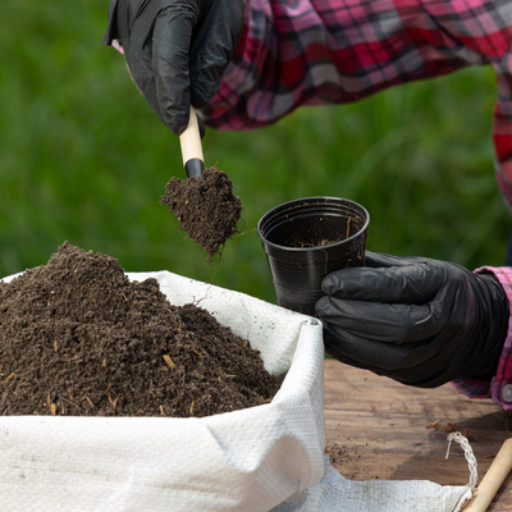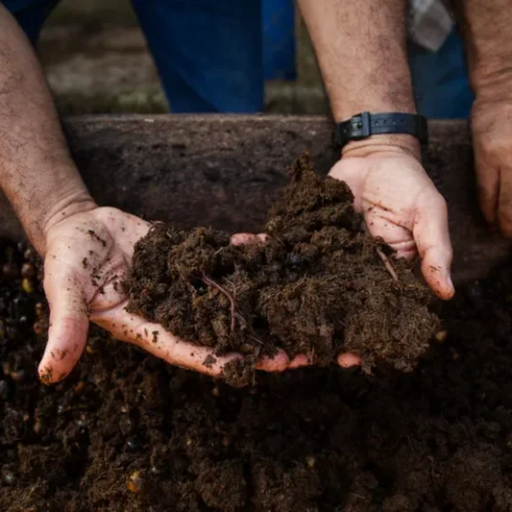Welcome to our blog, where we delve into the benefits and applications of premium organic dry fertilizer for all-purpose garden and lawn care. Our goal is to provide you with comprehensive insights into how organic fertilizers can enhance the health and vibrancy of your plants, while also promoting sustainable gardening practices. Whether you’re a seasoned horticulturist or a novice gardener, this blog will equip you with the knowledge needed to nurture your garden effectively. We’ll explore the distinct advantages of organic fertilizers, discuss their proper usage, and share tips for achieving the best results in your garden and lawn care endeavors.
What is Organic Dry Fertilizer?

Understanding the Basics of Natural Fertilizers
Organic dry fertilizers are plant, animal or mineral derived natural substances used for soil enrichment and giving plants crucial nutrients. Organic fertilizers unlike synthetic ones release their nutrients slowly to ensure constant availability to plants. They enhance the structure of the physical structure of the soil, its water holding capacity and its biological activity for beneficial microorganisms essential to healthy soil ecosystems. Compost, bone meal, blood meal among others as well as various mineral powders which achieve a balanced nutrient profile that encourages robust plant growth.
What Are The Benefits Of Dry Fertilizer In An Organic Garden?
Several key benefits can be realized from applying organic dry fertilizers in an organic garden. First is improved structure and microbial activity in soils which promote good aeration such that water retention and root development are enhanced. Secondly, they slowly supply essential nutrients like nitrogen (N), phosphorus (P) and potassium (K) that are required by plants. This gradual release helps minimize nutrient losses through leaching as well as preventing over-fertilization damage on plants. Lastly, organic fertilizers are environmentally sustainable as they come from naturally occurring materials thus reducing the use of chemical inputs hence promoting healthier gardens.
Key Differences between Organic and Conventional Fertilizers
There are fundamental differences between organic and conventional fertilizers with regards to their composition, nutrient release patterns and environmental impact. While compost, manure or bone meal decomposition occurs gradually releasing nutrients consistently in what is referred to slow release type of organic fertilizer enriching soil structure while increasing microbial activities leading to long term health of soils on one hand; synthetic conventional fertilizers are essentially designed to provide fast acting sources for such vital elements that may cause leaching resulting into possible burnout on crops if abused.
Another difference is about environmental impact where ogranincs seem more friendly since they rely on renewable resources therefore do not pollute water bodies like streams with dangerous chemicals which conventional ones suffer from. On the other hand, non-renewable resources are often used by conventional fertilizers and their chemical composition can lead to land and water pollution which makes them not sustainable.
Lastly, organic fertilizers are more likely to improve soil fertility over time because they increase its content of organic matter and support beneficial microorganisms. In contrast, while traditional fertilizers can be effective for immediate nutrient needs they do not benefit the soil’s long term health, with a risk of decreasing its quality due to excessive use. Simply put, short term nutritional requirements for plants should always be weighed against lasting land conditions whenever deciding between organic or inorganic options.
How to Use Organic Dry Fertilizer in Your Garden
Apply Granular and Dry Fertilizers in the Following Ways
Before you apply any fertilizer, do a soil test to figure out what nutrients your plant needs. This will help identify any shortcomings and determine the correct type and amount of fertilizer to use.
Choose the Right Fertilizer: Based on results from a soil test, select an organic granulated or dehydrated manure that meets your plants’ specific nutrient requirements.
Prepare: Remove weeds and rubbish from the area. Loosen the soil with a garden fork or hoe so it can absorb the fertiliser better.
Application:
- Broadcast Method: For large areas, evenly disperse granular fertilizer across the top of the ground. Use a spreader for more even distribution.
- Spot Application: As regards individual plants, sprinkle the recommended amount of fertilizer around each plant’s foot. Avoid contact with stems to prevent burning.
Incorporation: Integrate these nutrients into root zone by mixing them up to three to four inches deep using rake or hoe
Watering: After application thoroughly water through that area in order to activate the fertilizer and help plant absorption of nutrients.
Mulching: Spread fertilizer over fertilized parts in an effort to maintain moisture levels, regulate temperature fluctuation within soils as well as check weed growth.
Through these steps, organic dry fertilizers will ensure even and sustainable release of nutrient supply into your garden soil.
Seasonal Tips for Applying Organic Fertilizers
Spring – at this moment apply balanced organic fertilizers as plants start growing. Make sure it is properly incorporated into soil before watering deeply. Summer- Attention should be paid towards giving nutrients that encourage flowering and fruiting during summer. Slow releasing organic fertilisers are ideal for this period since they promote growth when temperatures soar with care taken not to overdo so. Fall-This is done in readiness for dormant season hence applying high phosphorus-potassium contented manure boosts overall resilience while enhancing root systems. Mulching is recommended to counteract temperature fluctuations. Winter- Generally, you do not apply manure during this period as majority of plants are dormant except for those that have winter crops or particular plant species that needs attention whereby in such a situation apply light fertilizer.
Thus, by adjusting your fertiliser application according to the season, you can encourage satisfactory plant growth throughout the year.
Best Practices for Different Plants and Flowers
Rose Bushes
Feeding and watering regularly ensures healthy rose bushes. Apply high nitrogen organic fertilizers in early spring to stimulate new growth. Deadhead spent flowers to encourage continuous blooming, and ensure they receive at least six hours of sunlight per day. Mulching around the base helps retain moisture and suppress weeds.
Vegetables
Tomatoes and peppers which are types of vegetables require rich soil for their maximum development. Before planting these vegetables mix compost or well rotted manure with soil for better results. Use balanced organic fertilizers throughout the growing season and apply every three to four weeks. Irrigate without fail so as not to stress them with insufficient water supply while mulching will keep moisture in the soil intact even during dry seasons.
Flowering Perennials
In the case of perennials, a more specific approach is needed that takes into account their development phases. At the onset of growth season, use an organic fertilizer which emphasizes nitrogen to enhance vegetative phase. When plants start showing flowers, switch to a higher phosphorus fertilizer that will help in blooming. Dividing crowded perennials every few years keeps them healthy.
Observing these guidelines for various kinds of plants and flowers also helps maintain your garden healthily always.
Types of Organic Dry Fertilizers

Various types: Fish Fertilizer, Bone Meal and More
Fish Fertilizer
A product of the fishing industry leftovers, fish fertilizer is an environmentally friendly way to grow crops. It contains nitrogen, potassium and phosphorus, which facilitates fast growth of plants as well as healthy soil. Fish fertilizers also have micro-nutrients and beneficial bacteria that enhance nutrient uptake by plants and promote good soil structure. They are especially useful for leafy greens and other vegetables with high nitrogen requirements for maximum growth.
Bone Meal
Bone meal is ground animal bones that are rich in phosphorous and calcium necessary for root establishment and flower formation. For instance a slow-release fertilizer like this one benefits several species including but not limited to perennials, bulbs, fruiting plants among others. Consequently adding bone meal into your garden soil may increase overall plant health by strengthening cell walls and improving nutrient absorption. You should work it in well before planting time to get the best results.
Blood Meal
This organic fertilizer is made from dried blood of animals that has been dried after use. It is excellent at correcting nitrogen deficiencies making them healthier with more greens besides having better leaves coloration. This effectual fertilizer works best on heavy feeders such as corns or tomatoes if used carefully not to cause nitrogen burn on the plants.Therefore,this type of fertilizer acts as a repellent that naturally helps repel pests like deer or rabbits from eating your landscape crops.
These popular types of organic dry fertilizers can be included in your gardening routine to supply essential nutrients while facilitating sustainable gardening practices.
Choosing the Right Type for Your Organic Garden
The choice you make concerning your garden every day relies on factors like the condition of your soil, types of plants chosen and specific nutritional needs.Simply begin by testing soil so that nutrition deficits can be identified together with PH levels.A balanced fertilizer such as fish manure will improve soils quality when used generally; it also feeds a wide range of plant types. Bone meal is very good for root and flower growth, especially with flowering plants like perennials and bulbs.Blood meal may be very useful if your plants need some nitrogen,in particular to those heavy feeders such as tomatoes. Always follow recommended application rates to avoid over-fertilization and ensure sustainable gardening practices.
Understanding N-P-K Ratios Like 6-2-4
The N-P-K ratio on a fertilizer package refers to the percentage of nitrogen (N), phosphorous (P) and potassium (K) that is contained in the fertilizer. For example, you can see the numbers 6-2-4; this means that it has 6% nitrogen, 2% phosphorus, and 4% potassium. Understanding these numbers is crucial because they tell us what are the main nutrients that help plants grow well? Nitrogen drives leafy growth, phosphorus supports root system development as well as flowering while potassium provides overall plant health so they can fight off diseases or stressors more effectively. The right N-P-K ratio depends on what your plants needs are; for instance heavy feeders would need a higher proportion of nitrogen while flowering crops need more phosphorus-hence differing ratios between them.
Benefits of Using Organic Dry Fertilizer

Improving Soil Structure and Health
Importantly, a flourishing garden requires improved soil structure and health; in this process, organic dry fertilizers are of significant help. Organic fertilizers from natural sources improve the soil structure by increasing organic matter that enhances moisture retention and nutrient availability to the plant. These because it is important for compost, worm castings, and manure contain not only required nutrients but also beneficial microorganisms. They break down organic materials slowly releasing nutrients slowly over time ensuring well-balanced nutrient supply for a longer duration. Additionally, to get a better yield of healthy plants with stronger stems using organic fertilizers improves aeration (air circulation), thereby lowering soil compaction’s effect on earthworms’ activity. Promoting these practices helps us build an environment that is capable of supporting plant health while minimizing reliance on chemicals.
Long-term Nutrient Release for Plants
Organic dry fertilizers release essential elements incrementally over time thus making them a sustainable source of nutrient in plants. Instead, they decompose gradually unlike synthetic fertilizers which cause sudden surges or depletion of nutrients. This enables crops to pick up nutrients only when necessary hence avoiding burning or leaching into groundwater as well. Moreover, it supports continuous plant growth and at the same time creates harmony within the soil as friendly organisms metabolize the organic matter into available substances. Accordingly, application of organic dry fertilizer guarantees regular flow of life necessitating elements such as nitrogen, phosphorous and potassium essential for development and resilience.
Promoting Soil Microbes and Microbial Activity
Healthy productive growing conditions heavily rely on fostering soil microbes and microbial activity to provide beneficial services needed by plants. Consequently, practices like incorporation of cover crops (CC) in the field change its characteristics favoring microbial diversity; mulching after planting is another good technique enhancing this phenomenon. Organic amendments add richness to the soil and act as sources of food for the microorganisms, thus providing a conducive environment for their growth. Reduced soil disruption through no-till farming also helps to preserve soil structure and habitats for beneficial microbes. Such practices exclude use of fungicides, insecticides or pesticides that may harm bacteria in the soil hence enhancing nutrient cycling and promoting healthy soils. In this way, farmers can maintain a highly dynamic microbial environment which contributes to improved soil fertility and sustainable crop growth.
Common Problems and Solutions with Organic Dry Fertilizers

Working with Slow-Release Fertilizers
For slow-release fertilizers, I ensure that these are mixed into the soil uniformly because this yields a constant supply of nutrients. Also, I regularly examine the plants to know whether or not they are absorbing nutrients as expected by examining their rate of growth and vitality. If shortfalls become obvious, I can use a quick release fertilizer to cover immediate requirements. Furthermore, selecting an appropriate kind of organic dry fertilizer relative to specific plant needs and soil conditions is advantageous in maximizing the benefits and efficiency of slow-release properties. By being observant and making adjustments whenever necessary, I can effectively control slow-release fertilizers for healthy long-lasting plant growth.
Managing Excess and Insufficient Fertilizer
Management of excesses or inadequacies in fertilizer application calls for a balanced approach full of tactful observation. To begin with, I carry out soil analysis tests so that I am aware of the base levels of nutrients around before applying input to them. Following manufacturer’s instructions on rates and timing helps me avoid over-fertilizing my crops at any given time.During under-fertilization,I will keep looking at the health condition of my plants as a sign for deficiency symptoms such as yellowing leaves or retarded growth.If there is any shortage,more organic matter may be added but quantities should be adjusted accordingly.In order to maintain optimum nutrient balance which ensures good health and development,I normally rely on regular soil tests combined with close crop monitoring.
Effective Use Of Fertilizers Under Different Growing Conditions
Effective use of fertilizers demands knowledge about specific growing conditions and changing strategies in optimizing results. In case land has sandy or arid soils that do not retain water well; it becomes essential to apply fertilizers with higher water holding capacities since they allow plants access to nutrients regardless drainage speed. On clayey soils which easily become compacted; in order to avoid nutrient accumulation at one point or another after application,I prefer to use well mixed slow-release fertilizers. In high rainfall areas where nutrient leaching may be highly pronounced, I select fertilizers with stabilizers or controlled-release mechanisms capable of keeping nutrients at constant levels over extended periods. For indoor and container gardening I choose specialized fertilizers that recognize the limited soil volume and provide balanced nutrition. Thus, by adjusting fertilizer use based on the peculiarities of each growing environment I improve plant health and productivity.
Frequently Asked Questions (FAQs)

Q: Does it serve as a fruit tree and shrub fertilizer?
A: Definitely. This product is great for fruit trees as well as shrubs. The blend of natural fertilizers is balanced, containing nutrients that help with flowering and fruiting.
Q: What are the benefits of the fertilizer to the soil and my plants?
A: Micronutrients are introduced into the soil by organic components such as seaweed and fish meal in this fertilizer. It is good for plant nutrition and general health thus can be included in any soil and plant care regime.
Q: What’s the NPK ratio for Premium Organic Dry Fertilizer?
A: Common blends range from 12-0-0 which are considered balanced supplies of major plant foods although different ratios exist for this kind of a fertilizer.
Q: How much fertilizer should I use in my garden or on my lawn?
A: The amount needed depends on particular needs of your plants and soils. Usually, one-pound or sixteen-ounce packs cover large areas but precise application details are available from package instructions.
Q: Is this an ideal foliar feed?
A: Yes, Premium Organic Dry Fertilizer can be used as a foliar feed to give your plants a quick nutrient boost. Dissolving it in water makes it soluble hence allowing easy delivery of nutrients to leaves.
Q: Is this CDFA approved?
A: It meets the approval standards set by California Department of Food & Agriculture (CDFA) thus making it trustworthy product when applied as manure for gardens.






